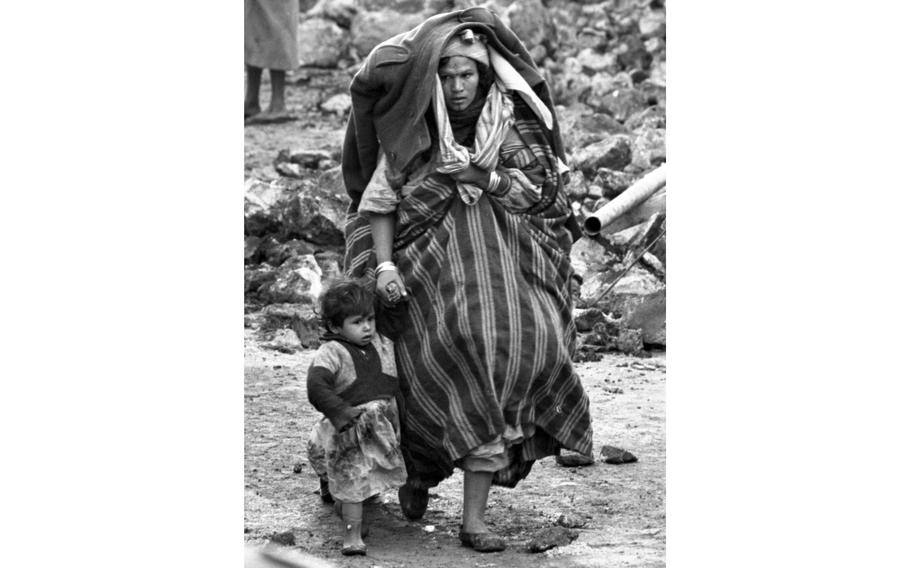
Carrying all the belongings she could save from her ruined home, a mother leads her child in search of shelter following an earthquake, in Barce, Libya, in February 1963. Most of the ancient city of Barce was destroyed in the magnitude 5.6 earthquake on Feb. 21, 1963. The final death toll was some 300 people with another 500 injured. (Red Grandy/Stars and Stripes)
This article first appeared in the Stars and Stripes Europe edition, Feb. 25, 1963. It is republished unedited in its original form.
BARCE, Libya — Residents and rescue teams continued to search for further victims of Thursday night’s [Feb. 21, 1963] violent earthquake in this shattered city.
With more than 70 percent of the city in ruins from the first tremor, survivors — some still dazed and in shock over the loss of family and friends — refused to take shelter in fear that those buildings left standing might collapse.
More than 260 persons died in the quake.
Rescue and medical operations, carried on by U.S. Air Force teams from Wheelus Air Base, Tripoli, British army units from Cyrennica Army Hq in Benghazi, and Libyan army units, continued in orderly fashion.
Injured survivors, some walking, some transported in ambulances, were treated at the 5th Libyan Army Hospital on the outskirts of the city. The more severely injured were transported to Benghazi.
Aircraft of the 7272nd Air Base Wing and the 58th Air Rescue Squadron of Wheelus Air Base continued to airlift supplies to the area.
Residents, most bandaged from injuries received when buildings crumbled from the first quake at 7:15 p.m. Thursday, worked in the rubble of their homes. Many sat in the open, still afraid to accept the improvised shelter of schools and city buildings.
Schoolteacher Ivage Farag showed rescue teams the remains of his home, a pile of stone and wood rubble.
“I had just finished cleaning my room,” Farag said, pointing to some stones at his right, “when the earthquake struck. The room was so spotless when it collapsed around me.”
Most of the city’s 11,000 residents were just sitting down to their traditional evening meal to break the day-long fast in observance of the Moslem month of Ramadan.
Remains of the meals could be seen in the rubble of many homes.